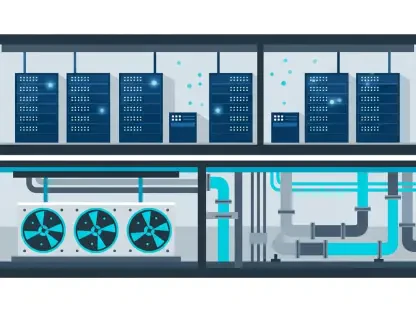I’m thrilled to sit down with Vladislav Zaimov, a seasoned telecommunications specialist whose expertise in enterprise telecom and risk management of vulnerable networks has made him a trusted voice in the industry. With the rapid integration of AI, 5G, and edge computing reshaping the telecom landscape, Vladislav offers invaluable insights into how these technologies are both a game-changer and a challenge for network reliability. In our conversation, we explore the transformative impact of AI on network demands, the critical need for infrastructure resilience, strategies inspired by data centers, and the evolving risk landscape of distributed systems. We also dive into the importance of workforce training and proactive design in building future-ready networks.
How is AI reshaping the telecom industry, particularly in terms of network demands?
AI is fundamentally changing the telecom industry by introducing applications that require massive amounts of data and ultra-low latency. Think about real-time analytics for customer service or dynamic orchestration of IoT devices—these are putting unprecedented pressure on networks. Unlike traditional setups built for predictable voice and data traffic, AI workloads, like training large models or running edge inference, create erratic traffic patterns that can spike or dip without warning. This unpredictability forces us to rethink how we design and manage bandwidth and latency to keep services running smoothly.
What specific risks does AI introduce to network stability?
One of the biggest risks is the unpredictable nature of AI-driven traffic. When a network isn’t prepared for sudden surges or drops, it can lead to congestion or bottlenecks, destabilizing the system. Even a brief interruption can have a cascading effect—call quality degrades, video streams buffer endlessly, and IoT devices drop off the grid. Beyond that, AI’s reliance on constant data access means that any downtime erodes customer trust almost instantly. It’s a high-stakes environment where stability isn’t just nice to have; it’s non-negotiable.
Why has infrastructure resilience become such a critical focus for telecom today?
Resilience is critical because the convergence of AI, 5G, and edge computing creates new stress points that traditional networks weren’t built to handle. These technologies demand continuous uptime and low latency, and any failure can have massive ripple effects. For instance, outages reported in recent studies have cost billions globally, disrupting everything from business operations to emergency services. Real-world consequences include lost revenue, damaged reputations, and even safety risks when critical connectivity fails. Resilience isn’t a luxury anymore; it’s the backbone of modern telecom.
How can telecom operators draw inspiration from data center strategies to boost reliability?
Data centers have mastered the use of predictive analytics and automation to stay ahead of issues, and telecom can learn a lot from that. Predictive tools analyze real-time data to spot potential failures or demand surges before they happen, while automation cuts down on human error by handling routine tasks or fixes instantly. Another game-changer is Out-of-Band management, or OOB, which is essentially a backup control channel that stays active even if the main network goes down. For remote telecom sites, OOB allows engineers to troubleshoot and restore service without needing to rely on the failed primary connection, saving crucial time.
What does ‘resilience by design’ mean when building telecom networks for the future?
‘Resilience by design’ means constructing networks with reliability baked into every layer from the start, not as an afterthought. This involves planning for disruptions—whether it’s a cyberattack, equipment failure, or a natural disaster—and ensuring the system can withstand or recover quickly. It’s about redundancy, geographic diversity, and failover mechanisms so there’s no single point of failure. Operators can also leverage automation for zero-touch provisioning or cellular backups to restore services in minutes rather than hours, keeping downtime to an absolute minimum.
How are distributed networks and edge computing altering the risk landscape for telecom?
Distributed networks, especially with the rollout of 5G small cells and edge computing nodes, massively increase the number of critical points that need monitoring and securing. Each additional site is a potential failure point, and with more connected devices, you’ve got more endpoints vulnerable to attacks. Automation adds another layer of complexity—while it streamlines operations, it also means you’re relying on orchestration systems that must be rock-solid. Without strong failover plans, a small local glitch can spiral into a network-wide issue much faster than in older, centralized setups.
Why is workforce training just as vital as technology in ensuring telecom resilience?
Technology alone can’t solve everything; people are the heart of resilient systems. With AI and advanced infrastructure, teams need to know how to interpret predictive alerts, respond to anomalies, and coordinate during crises. Training programs that include simulated outage drills or clear escalation protocols help build that readiness. About a third of industry leaders are already prioritizing this, recognizing that skilled engineers who can act decisively under pressure are as critical as any tool or system in maintaining uptime and security.
What is your forecast for the future of telecom resilience in an AI-driven world?
I believe telecom resilience will become the cornerstone of innovation in an AI-driven world. As AI, 5G, and edge computing continue to evolve, networks will face even greater demands and risks, pushing operators to embed proactive strategies like predictive monitoring and automation at every level. We’ll see tighter collaboration across the industry to set common standards for resilience, alongside heavier investments in both cutting-edge tech and human expertise. Ultimately, networks that can’t adapt to deliver uninterrupted service will fall behind, while those built with resilience as a foundation will lead the way in enabling the next wave of digital transformation.









